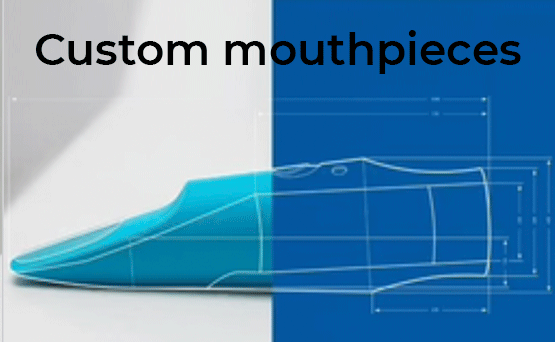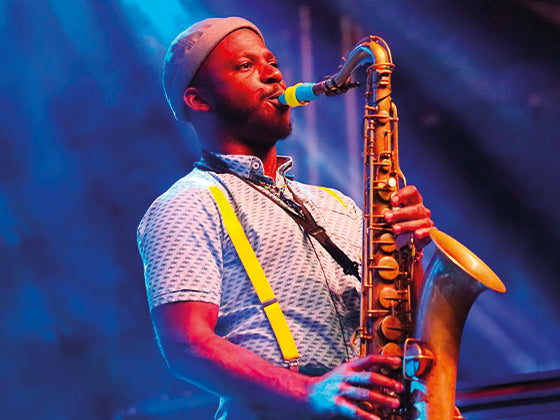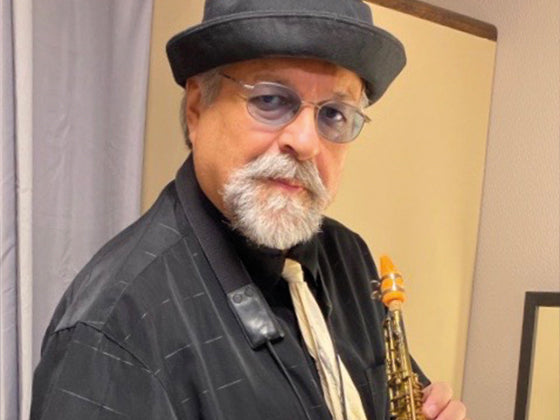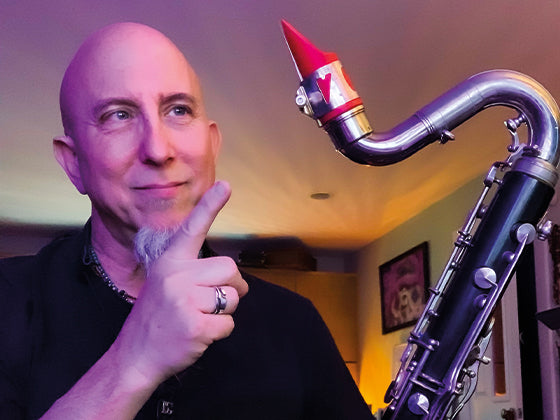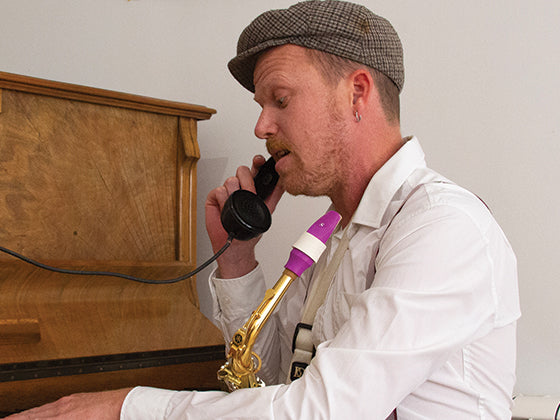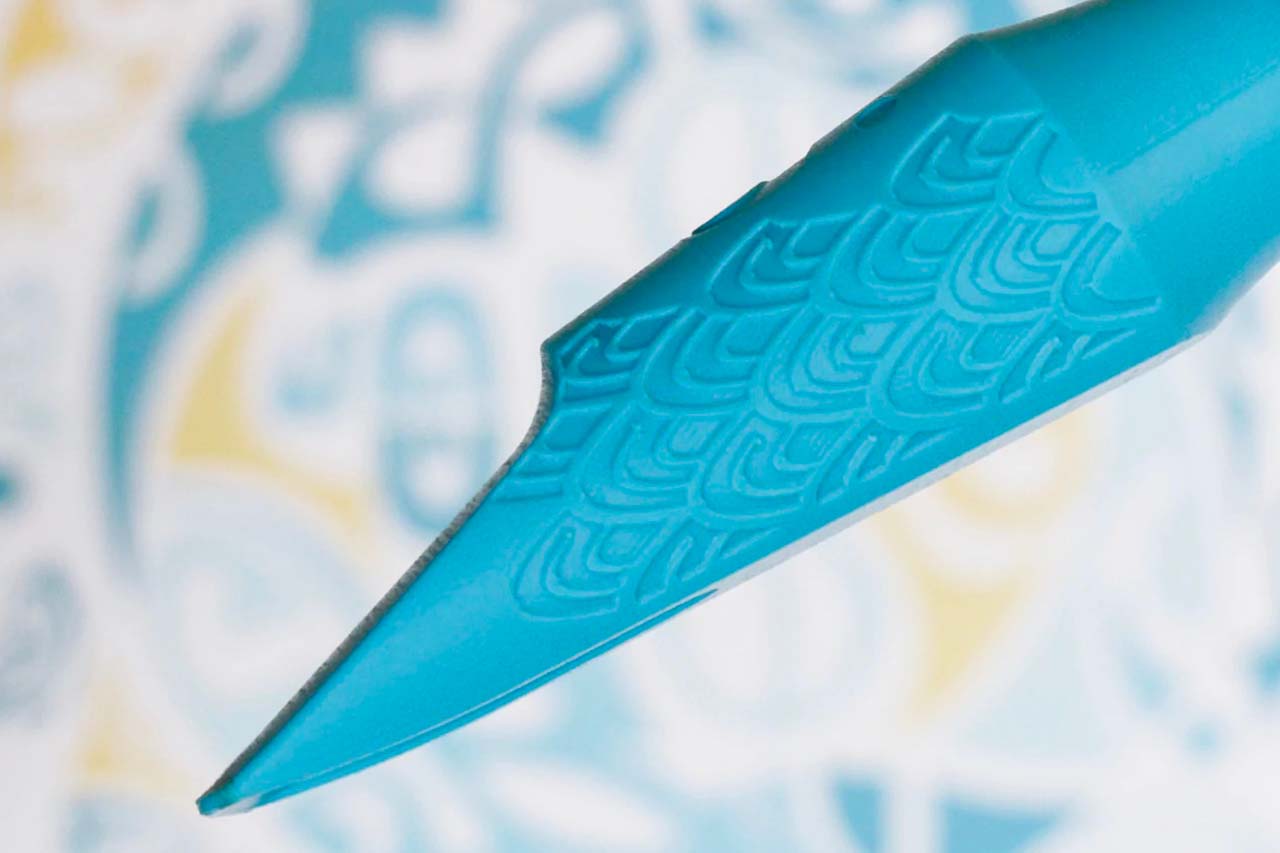The baffle is the part of the mouthpiece located just behind the reed: it is the surface that the air, vibrated by the reed, strikes directly, therefore its geometry is crucial. The baffle is the most important geometric element of the mouthpiece when it comes to shaping the sound, and it is primarily responsible for the acoustic properties of the mouthpiece and the comfort of play.
The impact of the baffle geometry on the sound
There are several geometries for saxophone mouthpiece baffles. The most common are:

In a simplified statement, the closer the baffle is to the reed, the more powerful and bright the sound will be. Therefore, with a straight baffle we get a very dark and soft sound (or smothered, with air inside) whilst a high step baffle will produce a very metallic and aggressive tone. An intermediate baffle will give a more balanced tone, with more flexibility but the mouthpiece will be more generic. The baffle does not only play on the brilliance of the mouthpiece, but it also determines the comfort of play, and in particular the resistance of the mouthpiece.
When Adolphe Sax invented the saxophone, the mouthpiece he imagined had a very low straight baffle coupled with a very large chamber. This mouthpiece, although quite difficult to play, created a rounded sound suitable for classical music. It is only at the beginning of the 20th century that some saxophonists had the idea of modeling their mouthpieces by adding a resin paste inside the mouthpiece to raise the baffle and create new sounds: these higher baffles amplified the higher frequencies, to the point of saturation (or "buzz").

Modified mouthpieces are not ideal as the volume of the cavity becomes much smaller, thus destabilising the tuning of the mouthpiece. Since then, mouthpiece designers have been creating mouthpieces with higher baffles, adapted to the requirements of jazz saxophonists. In particular, metal mouthpieces like Guardala or Dukoff have very long and very high baffles, which give them their metallic sound (also understand that the metallic sound does not come from the metal). This is also the case for Jumbo Java, Vandoren's ebonite model.
Baffle height variation
Keeping the same baffle shape, we can adjust the height: for example a broken baffle can be raised or lowered which allows us to play on the mouthpiece's brightness without drastically modifying the power, due to step.

A lower baffle will need more air volume. A very high baffle will result in a much more “free-blowing” mouthpiece, i.e one where the sound comes out directly without any resistance when the saxophonist blows. The mouthpiece then becomes more difficult to control and riskier, but it allows more freedom when it comes to effects such as bends, grawls…

Which baffle is best?
The choice of mouthpiece baffle will depend entirely on the sound you like. Despite everything we've said don't become to fixate yourself on a particular baffle, because other parameters such as the tip-opening, the mouthpiece chamber and the facing length will also have a strong impact on the color-tone.
The saxophone mouthpiece: Large or small chamber?
The saxophone mouthpiece tip opening
If you're looking for a Syos mouthpiece with a defined type of baffle, here are some examples you can check out:
- Straights baffles: Most of the clarinet mouthpieces have straight baffles (see the clarinet webpage on Syos website). On the saxophone, you can find a straight baffle on Seun Kuti alto model.
- Step baffles: Chad Lefkowitz-Brown tenor mouthpiece, Dayna Stephens bari mouthpiece (see the model).
- Curved baffles: Eddie Rich tenor mouthpiece, Raul Colosimo soprano mouthpiece (soprano webpage), Godwin Louis alto mouthpiece
We even made a special video for you to summarize everything and listen to the results:
Here is a little summary of the main principles:
-
If you like a powerful and bright sound (think Sanborn or Maceo ...) avoid mouthpieces with low baffles.
-
To have the same feel of play, it is better to play with a slightly more open mouthpiece if the baffle is high, and more closed if the baffle is low.
-
You can have fun with resin or wax to tamper with your baffle to change the timbre/tone-color. But you will probably make the mouthpiece intonation too high. Be careful not to damage the mouthpiece!

